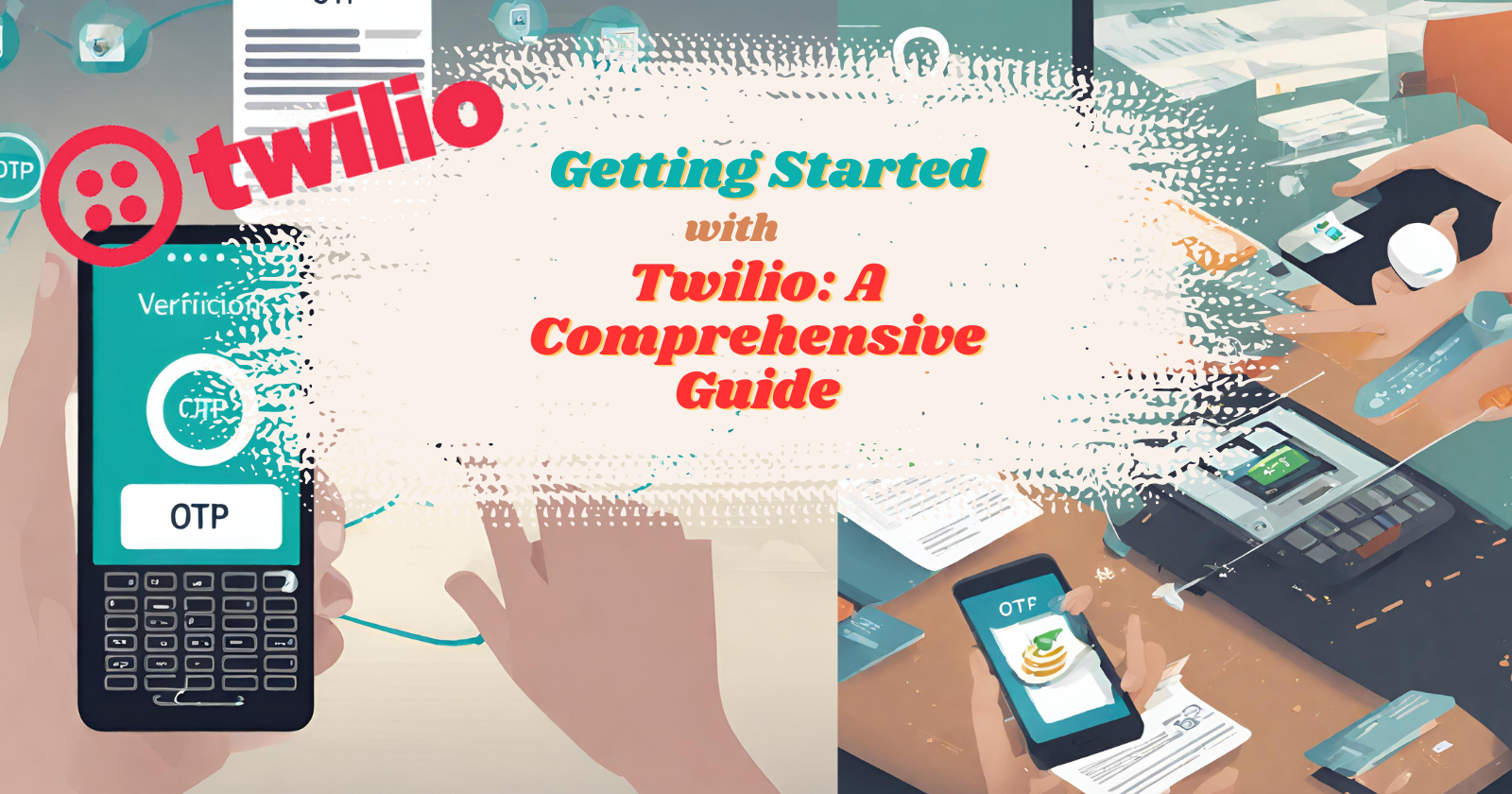Getting Started with Twilio: A Comprehensive Guide
 SIDDHIPRADA MOHAPATRO
SIDDHIPRADA MOHAPATROTable of contents

Introduction
In the ever-evolving landscape of communication and technology, Twilio has emerged as a powerful platform that enables developers to integrate messaging, voice, and video functionalities into their applications. Whether you're building a mobile app, a website, or a business tool, Twilio provides a robust set of APIs that make it easy to incorporate real-time communication features. This blog will serve as a comprehensive guide to help you get started with Twilio and explore its capabilities.
Chapter 1: Understanding Twilio
What is Twilio?
Twilio is a cloud communications platform that offers a variety of APIs for building communication applications. It allows developers to send and receive text messages, make voice calls, and integrate video communication seamlessly.
Key Twilio Concepts
Twilio Account: Before diving into development, you need to sign up for a Twilio account. This account will provide you with the necessary credentials to access Twilio's APIs.
Twilio Phone Numbers: Twilio assigns phone numbers that you can use for sending and receiving messages and calls.
Twilio REST API: The Twilio REST API is the core of Twilio's capabilities, enabling programmatic access to various communication features.
Chapter 2: Setting Up Your Twilio Account
Registering for a Twilio Account
Step-by-step guide on signing up for a Twilio account.
Obtaining your Account SID and Auth Token.
Getting a Twilio Phone Number
How to acquire a Twilio phone number.
Configuring the phone number for messaging and/or voice calls.
Chapter 3: Sending SMS Messages with Twilio
Introduction to Twilio SMS
Understanding Twilio SMS API.
Building your first SMS application with Twilio.
Sending SMS Using Twilio's Programmable Messaging API
Code snippets in popular programming languages (Python, JavaScript, etc.).
Handling responses and errors.
Chapter 4: Making Voice Calls with Twilio
Introduction to Twilio Voice
Overview of Twilio Voice API.
Setting up a voice application with Twilio.
Placing Voice Calls Using Twilio's Programmable Voice API
Code examples for initiating voice calls.
Configuring call features like recording and forwarding.
Chapter 5: Adding Video Communication with Twilio
Introduction to Twilio Video
Overview of Twilio Video API.
Integrating video chat into your application.
Setting Up Video Calls Using Twilio's Programmable Video API
Code snippets for creating and joining video rooms.
Configuring video call options.
Chapter 6: Handling Webhooks and Events
Understanding webhooks in Twilio.
Configuring webhook URLs for handling incoming messages, calls, and events.
Chapter 7: Advanced Twilio Features
Exploring additional features like two-factor authentication (2FA), phone number lookup, and more.
Leveraging Twilio Marketplace for third-party integrations.
😊 Thank you so much for reading my blog! 😊 I hope you found it helpful and informative. If you did, please 👍 give it a like and 💌 subscribe to my newsletter for more of this type of content. 💌
I'm always looking for ways to improve my blog, so please feel free to leave me a comment or suggestion. 💬
Thanks again for your support! 😊
Subscribe to my newsletter
Read articles from SIDDHIPRADA MOHAPATRO directly inside your inbox. Subscribe to the newsletter, and don't miss out.
Written by

SIDDHIPRADA MOHAPATRO
SIDDHIPRADA MOHAPATRO
● A DevOps Engineer with practical experience in production monitoring, automation, and optimization. ● Created UNIX shell scripts for day-to-day check-outs and added them to the crone (which saved the manual work for 1 Hour per day). ● Have experience automating the building, deploying, and releasing of code from one environment to another through the use of DevOps engineering and Build and Release. ● YAML proficiency. ● Understanding of the Python programming language, Matplotlib, pandas, and tkinter (GUI). ● knowledge of Github and the GIT (version control system).